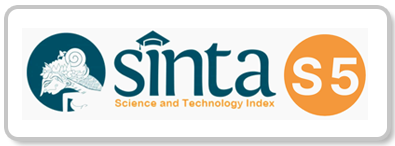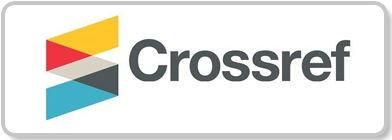Perancangan Relayout Warehouse Finish Goods dengan Metode Class Based Storage (CBS) di PT.XYZ Gresik
DOI:
 https://doi.org/10.37859/jst.v12i1.9421
https://doi.org/10.37859/jst.v12i1.9421
Abstract
PT. XYZ is a ceramic tile manufacturing company that is facing warehouse challenges due to increased production, such as disorganized storage and high material handling costs. A warehouse layout redesign is required to improve operational cost efficiency. This study aims to propose a more effective warehouse layout using the Class-Based Storage (CBS) method, which classifies products into specific groups. The research was conducted over a period of three months, from December 2024 to February 2025. The results showed that the initial inbound travel distance was 17,877,537.04 meters, while the proposed inbound distance was 17,810,612.67 meters, resulting in a reduction of 66,924.37 meters. For outbound movements, the initial distance was 66,031,993.2 meters, and the proposed distance was 66,015,291.9 meters, achieving a reduction of 1,670.13 meters. The material handling cost per meter was obtained using the formula:(maintenance costs + operator costs) / (inbound material handling moments + outbound material handling moments),which resulted in an initial cost of Rp. 43 per meter, and a proposed cost of Rp. 40 per meter. The initial inbound material handling cost was Rp. 768,734,093, which decreased to Rp. 712,424,507, indicating a cost reduction of Rp. 56,309,586 over three months. For outbound goods, the cost dropped from Rp. 283,937,571 to Rp. 264,061,168, with a total savings of Rp. 19,876,403. The reduction in both distance and material handling costs reflects a significant efficiency improvement, contributing to substantial savings in warehouse operational expenses.
Downloads
References
Anik, M., & Wibowo, A. D. (2020). Mengurangi ongkos material handling melalui perbaikan layout menggunakan systematic layout planning ( slp ) reduce material handling cost through improvement. Baut Dan Manufaktur, 02(Vol 2 No 02 (2020): Jurnal Baut Dan Manufaktur Vol. 2 No. 2 Tahun 2020), 40–47.
Hakim, Z., Setiawan, & Yanatris, Y. A. (2017). Perancangan Sistem Informasi Penempatan Barang Jadi Pada Departemen Gudang Finish Goods. Jurnal Sisfotek Global, 7(1), 13–20.
Ismiyah, A., & Eka Dewy Karunia Wati, P. (2024). Perancangan Tata Letak Gudang pada Distriubtor Unicharm Menggunakan Metode Class Based Storage. Jurnal Surya Teknika, 11(1), 225–229.
Hidayat, N. P. A. (2012). Perancangan Tata Letak Gudang dengan Metoda Class-Based Storage Studi Kasus CV. SG Bandung. JURNAL Al-AZHAR INDONESIA SERI SAINS DAN TEKNOLOGI, 1(3), 105.
Isnaeni, S. et al. (2021). Penerapan Metode Class Based Storage Untuk Perbaikan Tata Letak Gudang Barang Jadi (Studi Kasus Gudang Barang Jadi K PT Hartono Istana Teknologi). Industrial Engineering Online Journal, 10(3).
Juliana, H., & Handayani, N. U. (2016). Peningkatan Kapasitas Gudang Dengan Perancangan Layout Menggunakan Metode Class-Based Storage. J@ti Undip : Jurnal Teknik Industri, 11(2), 113.
Mohamad Syihabul Akbar. (2024). P Perancangan Tata Letak Gudang Barang Jadi Produk Jilbab Dengan Metode Class Based Storage Dan Penataan Ergonomis CV Jilbab Surabaya. Jurnal Surya Teknika, 11(1), 8–13
Muharni, Y., Irman S M, A., & Noviansyah, Y. (2020). Perancangan Tata Letak Gudang Barang Jadi Menggunakan Kebijakan Class-Based Storage dan Particle Swarm Optimization Di PT XYZ. Jurnal Teknik Industri, 10(3), 200–209.
Suhada, K. (n.d.). Usulan Perancangan Tata Letak Gudang dengan Menggunakan Metode Class-Based Storage ( Studi Kasus di PT Heksatex Indah , Cimahi Selatan ) Recommendation For Designing New Storage Layout Using Class-Based Storage Method ( Case Study at PT Heksatex Indah , C. 52–71.
Supriyadi, E., & Srikandi, S. A. (2023). Penerapan Perancangan Ulang Tata Letak Fasilitas Terhadap Ongkos Material Handling (OMH): Systematic Literature Review. Jurnal Tecnoscienza, 7(2), 237–251.
Syafarina, G. A., & Zaenuddin, Z. (2023). Implementasi Framework Streamlit Sebagai Prediksi Harga Jual Rumah Dengan Linear Regresi. Metik Jurnal, 7(2), 121–125.
Yonita, V., & Aprilyanti, R. (2022). Analisis Penerapan Prinsip–prinsip Good Corporate Governance Pada Usaha Kecil dan Menengah (Studi Pada UKM Restoran/Rumah Makan/Kafe di Daerah Cikupa Tangerang). ECo-Fin, 4(1), 1–9.
Nugraha, W., Syarif, M., & Dharmawan, W. S. (2018). Penerapan Metode Sdlc Waterfall Dalam Sistem Informasi Inventori Barang Berbasis Desktop. JUSIM (Jurnal Sistem Informasi Musirawas), 3(1), 22–28.
Ramadhani, T. S., Suryadi, S., & Irmayani, D. (2019). Sistem Informasi Stok Gudang Pada Platinum Hotel Berbasis Web. Jurnal Informatika, 6(2), 35–40.
Rochman, T., Dwi, R., Dan, A., & Patriansyah, R. (2010). Peningkatan Produktivitas Kerja Operator melalui Perbaikan Alat Material Handling dengan Pendekatan Ergonomi. Jurnal Performa, 9(1), 1–10.
Sitorus, H., Rudianto, R., & Ginting, M. (2020). Perbaikan Tata Letak Gudang dengan Metode Dedicated Storage dan Class Based Storage serta Optimasi Alok
Yusuf, N., & Nursyanti, Y. (2017). Analisis Pergudangan Di Bagian Gudang Barang Jadi (Finishgoods) Pt Nipress Tbk Cileungsi Bogor. Jurnal Manajemen Industri Dan Logistik, 1(1), 9.
Downloads
Published
How to Cite
Issue
Section
License
Copyright (c) 2025 muchammad syauqi Habibillah, Hery Murnawan

This work is licensed under a Creative Commons Attribution-NonCommercial-ShareAlike 4.0 International License.





















